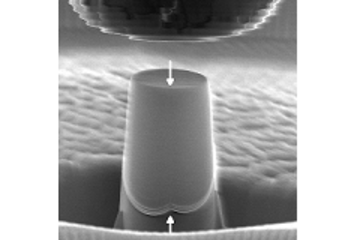All genres
1101.
Talk
What can EPR hyperfine parameters tell about the Si dangling bond? - A theoretical study. International conference on amorphous and nanoporous semiconductors (ICANS) 23, Utrecht, Netherlands (2009)
1102.
Talk
Theory guided design of bcc Mg-Li alloys for ultra-light weight applications. ICSMA 15: International Conference on the Strength of Materials, Dresden, Germany (2009)
1103.
Talk
Multi-physical alloy approaches to solid solution strengthening of Al. 15th International Conference of Strength of Materials, Dresden, Germany (2009)
1104.
Talk
Hierarchical modeling of the mechanical properties of lobster cuticle from the nanoscale up to the macroscale. ICSMA 15: International Conference on the Strength of Materials, Dresden, Germany (2009)
1105.
Talk
The accuracy of first principles methods inpredicting thermodynamic properties of metals. XVIII International Material Research Conference, Cancun, Mexico (2009)
1106.
Talk
Overview of the crystal plasticity finite element method. THERMEC 2009, Berlin, Germany (2009)
1107.
Talk
Fundamental materials-design limits in ultra light-weight Mg-Li alloys determined from ab initio calculations. Seminar in the Department of Low Dimensional Structures and Metastable Phases at the Max Planck Institute for Metals Research, Stuttgart, Germany (2009)
1108.
Talk
Ab initio determined materials-design limits in ultra light-weight Mg-Li alloys. Seminar in the Department of Strukture at the Institute of Physics of Materials of the Academy of Sciences of the Czech Republic and Institute of Chemistry of the Faculty of Sciences of Masaryk University, Brno, Czech Republic (2009)
1109.
Talk
Ab-initio based multi-scale approaches to the elasticity of polycrystals. Seminar at the Department of Physical Metallurgy and Materials Testing at Montan Universität Leoben, Leoben, Austria (2009)
1110.
Talk
Ab initio calculation of phase boundaries in iron along the bcc-fcc transformation path and magnetism of iron overlayers. Seminar at the Department of Materials Physics at Montan Universität Leoben, Leoben, Austria (2009)
1111.
Talk
Materials Design based on Ab Initio Thermodynamics: Status, Perspectives, and Trends. Colloquium Talk at Institut für Materialprüfung, Werkstoffkunde und Festigkeitslehre, Universität Stuttgart, Stuttgart, Germany (2009)
1112.
Talk
Atomistic calculations of interfaces: Bridging the relevant scales. Institute’s Colloquium, Institut für Gesteinshüttenkunde, Aachen, Germany (2009)
1113.
Talk
Ab Initio Thermodynamics: Status, applications and challenges. The second Sino-German Symposium on “Computational Thermodynamics and Kinetics and Their Applications to Solidification”, Kornelimünster/Aachen, Germany (2009)
1114.
Talk
Fully ab initio supercell corrections for charged defects. CECAM workshop "Which Electronic Structure Method for the Study of Defects?", Lausanne, Switzerland (2009)
1115.
Talk
First principles determination of phase transitions in magnetic shape memory alloys. 2nd Sino-German Symposium on Computational Thermodynamics and Kinetics and their Application to Solidification, Aachen, Germany (2009)
1116.
Talk
Computing free energy contributions of point defects. ECAM conference: Which Electronic Structure Method for the Study of Defects?, Lausanne, Switzerland (2009)
1117.
Talk
Materials Design Based On Ab Initio Thermodynamics And Kinetics: Present Status And Perspectives. Colloquium at Universität Gießen, Gießen, Germany (2009)
1118.
Talk
Modern Methods of Multiscale Modeling. Colloquium at TU Darmstadt to celebrate 20 years of Materials Science Faculty at the TU Darmstadt, Darmstadt, Germany (2009)
1119.
Talk
Role of Atomistic Simulations in the Prediction of Thermodynamic Properties of Materials. Workshop on Multi-Scale Computational Materials Design of Structural Materials, POSCO international center, Pohang, South Korea (2009)
1120.
Talk
The accuracy of first principles methods in predicting thermodynamic properties of metals. Asia Steel 2009, Busan, South Korea (2009)











